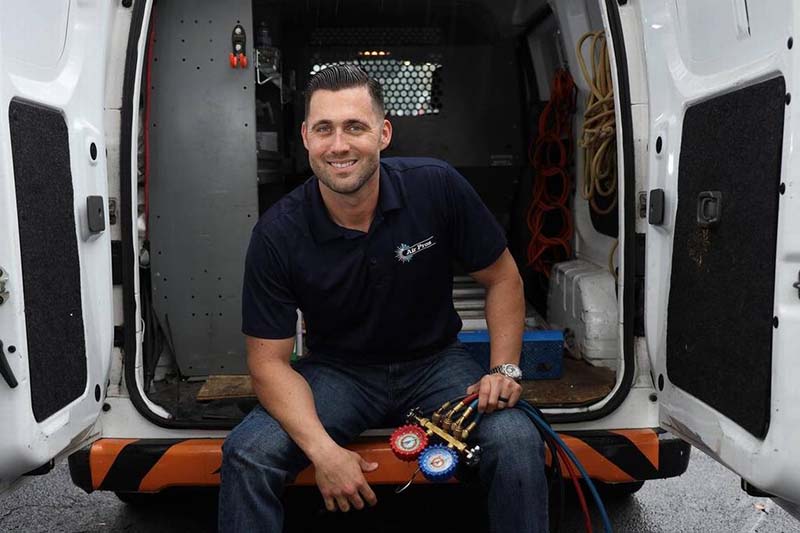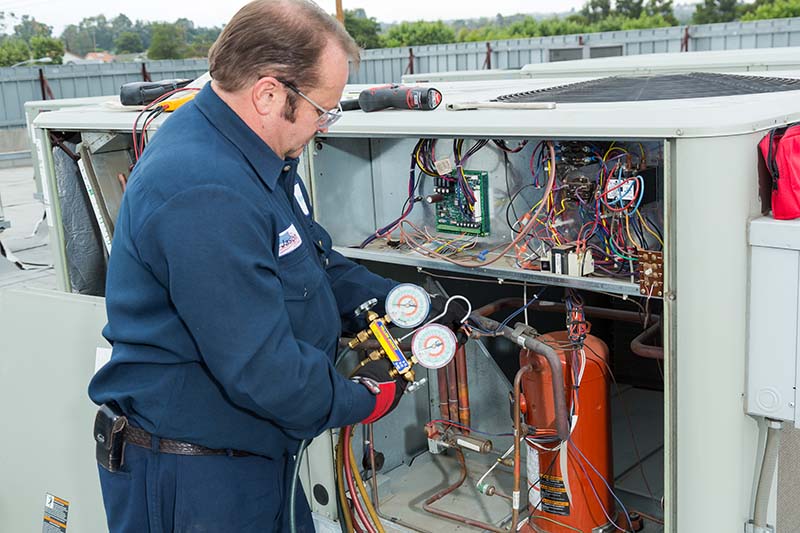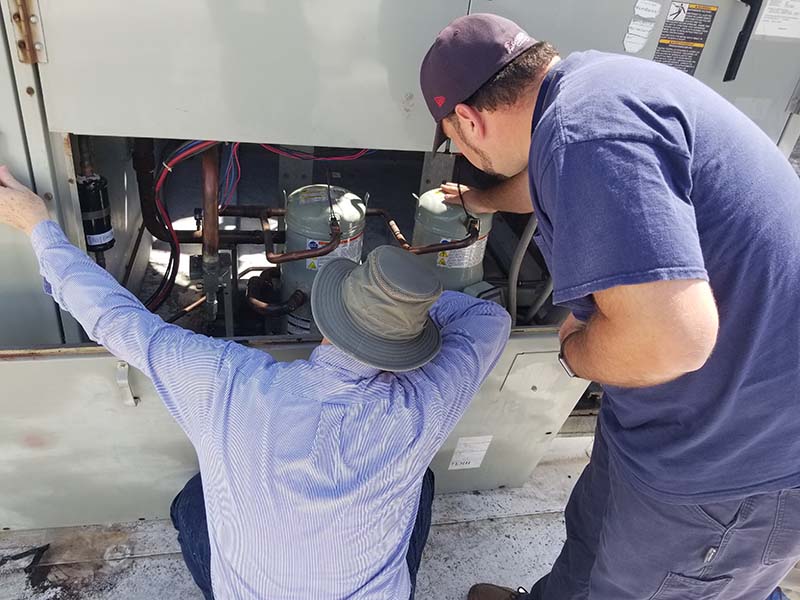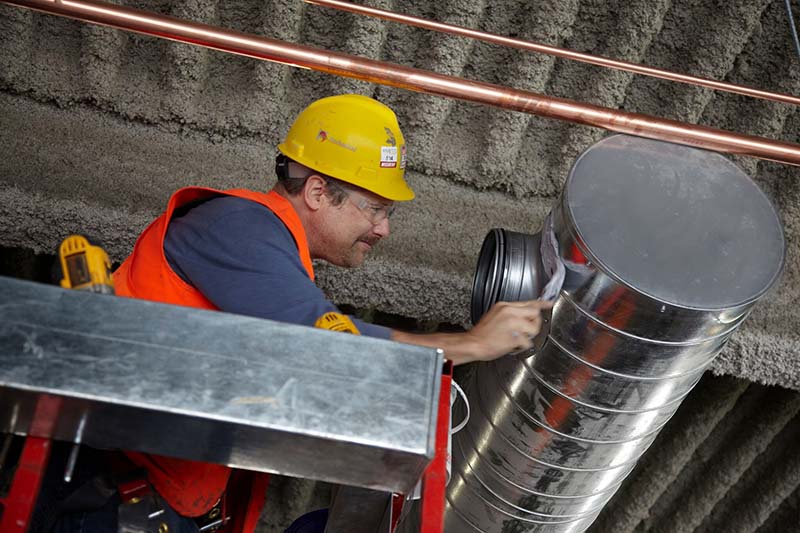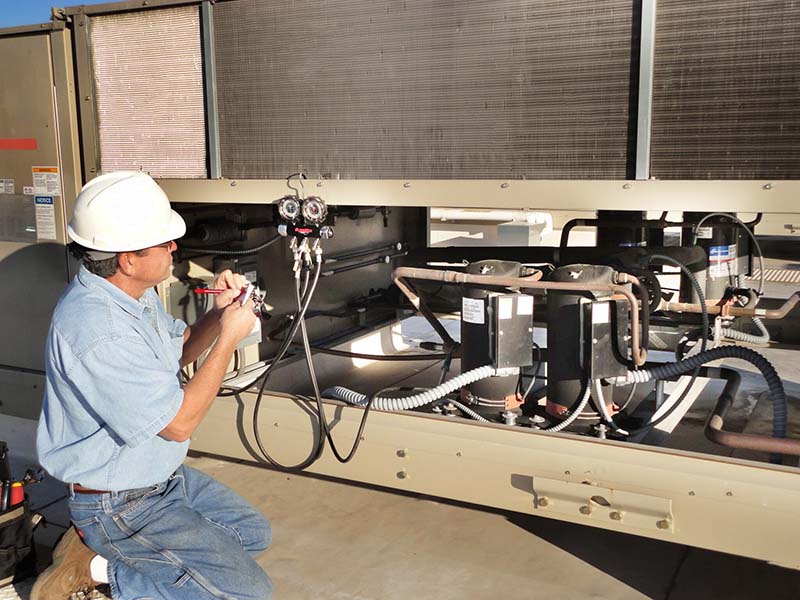Buildings that are closed or have reduced occupancy still need their equipment serviced
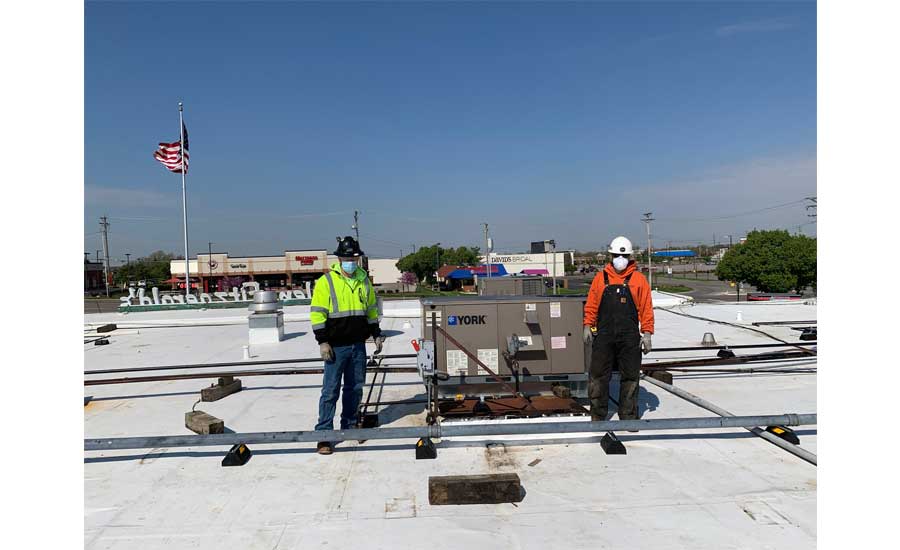
During this unprecedented societal shutdown due to COVID-19, many individuals are working from home, so most commercial buildings have either been closed down or are operating with a limited number of occupants. As a result, the HVAC systems in those buildings are likely operating on a reduced schedule, or else they may have been turned off completely.
However, just because buildings are closed does not mean that routine maintenance on HVAC equipment should be put off until occupants return to the building. Indeed, this is a good time for contractors to remind their commercial customers to take the opportunity to make repairs or upgrade their systems, or at a minimum, to keep up with the regularly scheduled maintenance.
Some Companies Are Open And Operational
The majority of the commercial customers at Air Pros USA, which has locations in Florida, Georgia, Colorado, Texas, and Washington state, have remained open during the pandemic, so their HVAC systems have been operating as they normally would, said Anthony Perera, company president and founder.
OPEN FOR BUSINESS: Anthony Perera of Air Pros said the majority of their commercial customers have remained open during the pandemic.
“Most of our commercial clients are banks and data centers, and they are still operating as usual,” he said. “The demand for regular maintenance is still there, but a lot of major projects and retrofits are being put off for now. We’ve had some requests for UV lights, hospital-grade filtration, coil cleanings, and duct sanitation, but for the most part, owners just want to keep their equipment running as optimally as possible right now.”
For those commercial customers whose buildings have been closed, Perera’s staff has been in close contact with them, reminding them of the need to keep their HVAC systems maintained and serviced before occupants return.
“We’ve been suggesting that now is the time to take the opportunity to go through and clean the systems and get them ready for occupants,” said Perera. “Otherwise, if the systems are not running and then they are turned back on, there will be a lot of stress on the equipment, which could lead to failures. We’re expecting that could happen, and we’re ready for that.”
NEEDED REPAIRS: Some of EMCOR’s customers are taking advantage of their building’s low occupancy to complete needed repairs and replacement.
David Geith, vice president of service at EMCOR Services Mesa Energy Systems in Irvine, California, noted that in the commercial office space, most of their clients have tenants that are considered essential businesses, so while the buildings are running at a substantially lower load, they are occupied and therefore still operating. For this reason, Mesa, which operates all over California, Arizona, and Nevada, is still on-site at the majority of its customer locations.
“Some customers are taking advantage of their building’s low occupancy to complete needed repairs and replacement, and many customers are asking us about coil cleanings, enhanced filtration, UV lighting, and bipolar ionization,” he said.
While there is not enough information regarding whether or not ductwork and coils should be disinfected before tenants return to work, cleaning coils with biocide is always a good practice, said Geith. In addition, over-ventilation and the implementation of UV lighting coupled with proper filtration is an ASHRAE 170-recommended strategy for hospitals, he said, which makes it appropriate to use for infectious disease control in commercial buildings.
“The question we get most often is if the virus can be spread by the HVAC system, and unfortunately, no one can give a clear definitive answer to that question,” said Geith. “Having said that, we believe it is prudent to offer our clients guidance based on standards set by ASHRAE for infectious disease in hospitals. Hospitals go to great lengths to enhance their filtration, increase ventilation rates, and sometimes include UV lighting to disinfect coils and equipment. By following these standards, we can offer solutions for customers who have similar concerns in their buildings.”
Building Setbacks
The commercial clients at Whole Building Systems LLC in Charleston, South Carolina, include K-12 school districts, universities, and state and local government agencies. Most have large building portfolios and use district or campus-wide BAS to control and monitor their HVAC system performance, and all have continued to operate their systems during the existing shutdown, said M. Dennis Knight, P.E., FASHRAE, principal/engineer at Whole Building Systems and member of ASHRAE’s Epidemic Task Force.
ROUTINE MAINTENANCE: While buildings are empty or partially occupied, Whole Building Systems’ Dennis Knight (left), shown here inspecting a rooftop unit, recommends that clients do both routine maintenance and perform some deferred maintenance work.
“We are in a warm and humid climate zone, and it is never a good idea to completely shut down an HVAC system in a building in this climate zone for long periods of time,” he said. “Our clients have typically operated their systems in the unoccupied mode, where cooling thermostat set points have been set up from a normal occupied setting of 74°F to 78 to 80°F, and heating thermostat set points have been set back from normal occupied settings of 70°F to 65°F. Humidity settings have been relaxed from an occupied setting of 55 percent relative humidity to an unoccupied setting of 60 percent.”
While buildings are empty or partially occupied, Knight has recommended that clients take the opportunity to do both routine maintenance and to perform some deferred maintenance work, such as replacing units that are at the end of their useful life. (Of course, any work performed by the maintenance staff and/or contractors should follow CDC and OSHA guidelines for safe work practices.)
“I would suspect that many private sector building owners may not be as proactive or have the financial capability to take similar actions and have had to either reduce system maintenance or defer it altogether,” said Knight. “For owners who have had to bring their operations to an almost complete stop, as a minimum, I would suggest to inspect their facilities as often as possible for signs of problems and keep condensate drain traps filled to help avoid IAQ issues when restarting the systems.”
Requested Closures
AIR CONTROL: At IFS, customers are seeing the need to better control the amount of air, and quality of air, being added to and removed from buildings.
Integrated Facility Services (IFS), which is a full-service HVAC, plumbing, piping, fire protection, and building automation firm in St. Louis, Missouri, did have several commercial clients specifically request that their HVAC equipment be turned off.
“However, we strongly encourage that they run their equipment in a reduced mode to allow for continued air exchanges and to keep equipment from sitting dormant for too long,” said Chris Ruth, controls manager at IFS. “If equipment has been turned off completely, it should be closely monitored upon startup, and filter changes are always good to do after extended periods of non-operation. We recommend starting equipment up a week before occupancy to allow plenty of time for service if needed.”
SERVICE WORK: As service work orders have continued to come in, building owners have realized the need to continue having IFS maintain their equipment.
Service for some customers was halted for a brief time during the pandemic, said Ruth, as many owners and operators completely closed their buildings to visitors. However, as service work orders continued to come in, building owners realized the need to continue maintaining their equipment, so customers are slowly beginning to allow IFS to service equipment again. Other projects were completed, too, such as mechanical and controls work that involved building pressure and IAQ.
“Customers are seeing the need to better control the amount of air, and quality of air, being added to and removed from buildings,” said Ruth. “Medical facilities are requesting specific rooms or wings be configured to operate under negative pressure in order to mitigate the amount of airborne particles leaving said areas.”
For more information on HVAC maintenance and operation recommendations during the Covid-19 shutdown, visit ASHRAE’s COVID-19 Resources webpage at www.ashrae.org/technical-resources/resources (see sidebar below).
ASHRAE Guide On HVAC Maintenance During Shutdown
ASHRAE has published two statements to define guidance on managing the spread of SARS-CoV-2, the virus that causes COVID-19 disease (coronavirus) with respect to the operation and maintenance of HVAC systems in buildings. The official statements are as follows:
Transmission of SARS-CoV-2 through the air is sufficiently likely that airborne exposure to the virus should be controlled. Changes to building operations, including the operation of heating, ventilating, and air-conditioning systems, can reduce airborne exposures.
Ventilation and filtration provided by heating, ventilating, and air-conditioning systems can reduce the airborne concentration of SARS-CoV-2 and thus the risk of transmission through the air. Unconditioned spaces can cause thermal stress to people that may be directly life threatening and that may also lower resistance to infection. In general, disabling of heating, ventilating, and air-conditioning systems is not a recommended measure to reduce the transmission of the virus.
For more information, ASHRAE’s COVID-19 Resources webpage provides a plethora of guidance regarding the operation and maintenance of HVAC systems during the shutdown due to COVID-19. ASHRAE recommends that building owners and service professionals follow the requirements of ASHRAE Standard 180-2018, Standard Practice for the Inspection and Maintenance of Commercial HVAC Systems, which has tables to show the typical maintenance required for equipment that has been in operation. Some of those recommendations are as follows:
- Continued operation of all systems;
- Outside air for ventilation should be increased to as much as the HVAC system can accommodate and still maintain acceptable indoor conditions during occupied hours;
- Flushing sequence or mode may be implemented to operate the HVAC system with maximum outside airflows for two hours before and after occupied times; and
- Systems may be operated at minimum outside air settings when the building is unoccupied or not operating in the flushing mode.
Contractors should consider using personal protective equipment (PPE) when maintaining ventilation materials including filters and condensate, and the following items should be checked during maintenance:
- Dampers, filter, and economizers seals and frames are intact and clean, are functional and are responding to control signals;
- Zone and air temperature, humidity, and CO2 system sensors, as applicable, are calibrated and accurately reporting environmental conditions to the BAS or local controllers;
- Air Handling systems are providing adequate airflow, there are no blockages in the duct system (for example – closed fire/smoke dampers) and air from the air handling system is reaching each occupied space;
- Exhaust fans are functional and venting to the outdoors;
- Check outside air intake regularly for any potential risk such as exhaust nearby and provide proper clearance if accessible by pedestrians, etc.; and
- Update or replace existing HVAC air filtration to a minimum of MERV 13 (MERV 14 preferred) or the highest compatible with the filter rack, and seal edges of the filter to limit bypass. Make sure the air handling systems and fans can overcome the additional pressure drop of the new filters and still maintain air flow at acceptable levels.
